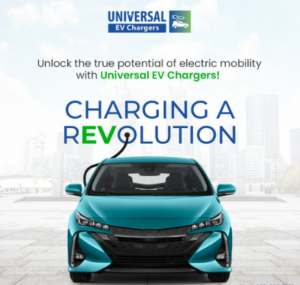The global shift towards electric vehicles (EVs) is no longer a distant dream; it’s a tangible reality reshaping the automotive landscape. According to the International Energy Agency (IEA), EV sales are set to soar by over 20% this year, reaching a staggering 17 million vehicles worldwide. What’s propelling this surge? The answer lies not only in technological advancements but also in the changing tides of consumer demand and environmental consciousness.
Driving Forces Behind the EV Revolution
One of the primary drivers behind the EV revolution is the relentless momentum in China, the world’s largest EV market. The IEA forecasts that China will account for nearly 60% of global EV sales in 2024, with an ambitious plan to electrify almost one in three cars on its roads by 2030. This monumental shift not only reflects China’s commitment to sustainability but also its emergence as a leader in electric car manufacturing.
However, China isn’t alone in this journey. Europe is witnessing a steady rise in EV adoption, with sales increasing by almost 4% in the first quarter of this year. The European Union (EU) is investing heavily in EV infrastructure and incentivizing consumers to make the switch to electric, aiming to reduce carbon emissions and combat climate change.
Challenges and Opportunities
While the future of EVs looks promising, challenges remain on the horizon. Affordability and charging infrastructure are critical factors influencing mass adoption. To address these challenges, governments and industry stakeholders are working hand in hand to expand the network of universal EV chargers.
The IEA projects a near-fourfold increase in public EV charging points worldwide by the end of the decade, reaching 15 million. This infrastructure expansion is crucial not only for consumer convenience but also for realizing the full potential of the EV market.
Universal EV Chargers: Powering the Future
Universal EV chargers play a pivotal role in accelerating the transition to a greener future. By providing convenient and accessible charging options, they empower consumers to embrace EVs with confidence. Moreover, universal chargers enhance the viability of electric vehicles for long-distance travel, alleviating range anxiety and driving adoption.
As the automotive industry undergoes a paradigm shift, universal EV chargers are poised to become indispensable infrastructure assets. They embody the collective effort towards sustainable transportation and pave the way for a cleaner, greener planet.
Conclusion
The rise of electric vehicles signifies more than just a shift in transportation preferences; it’s a testament to our collective commitment to building a sustainable future. With China leading the charge and Europe following suit, the global EV revolution is gaining momentum with each passing day. As we navigate the road ahead, universal EV chargers will be our guiding lights, illuminating the path towards a cleaner, greener tomorrow.
Join us in embracing the electric revolution and driving change one charge at a time


